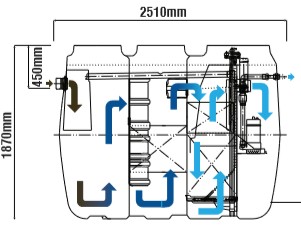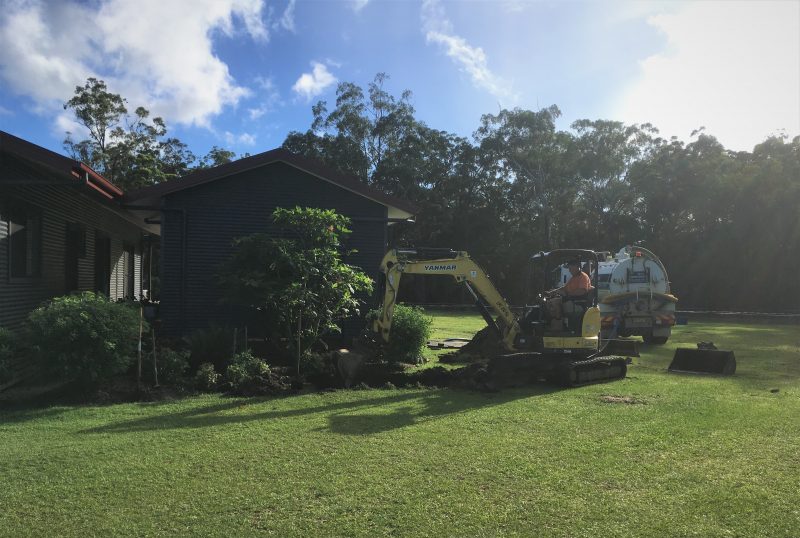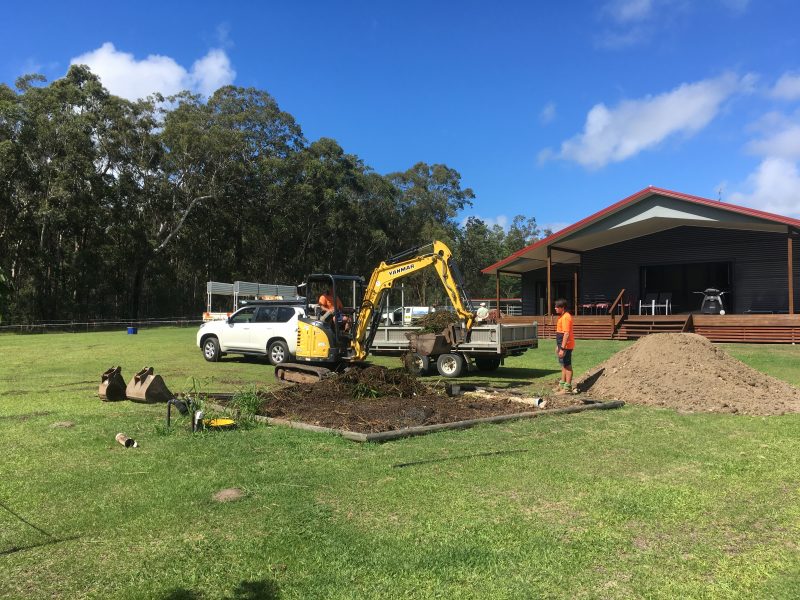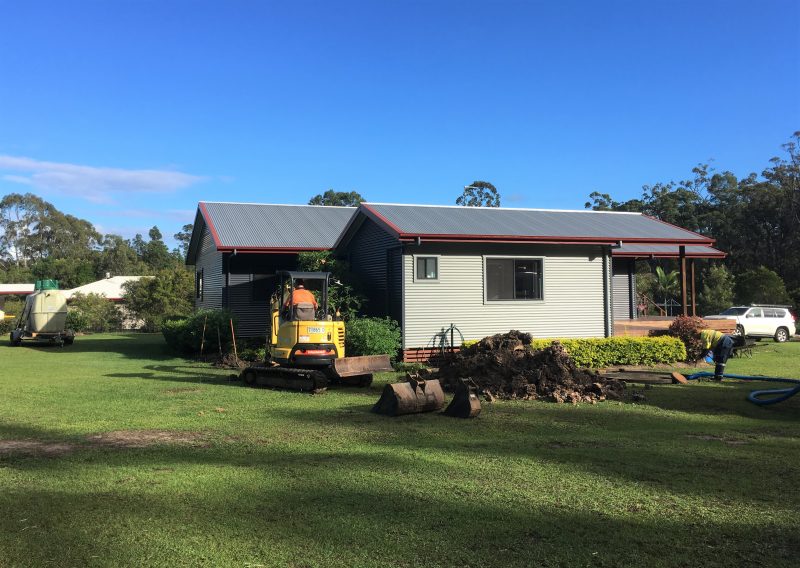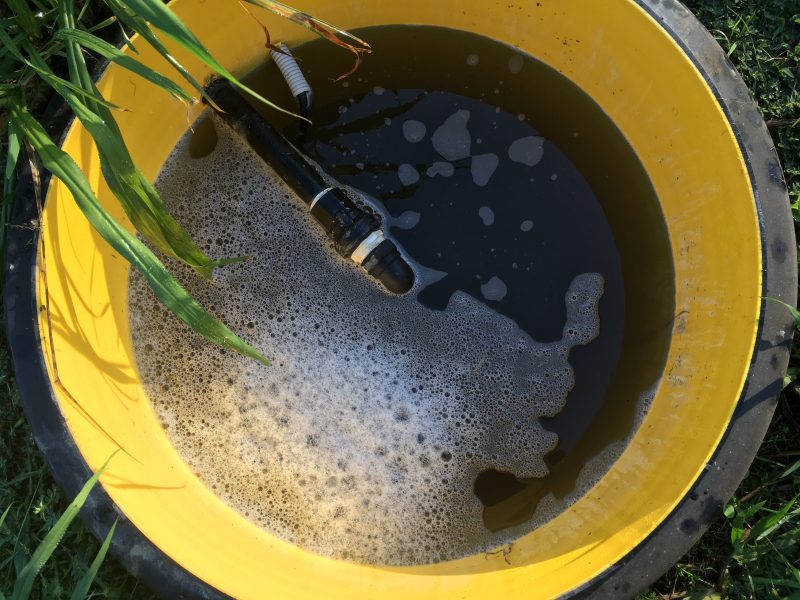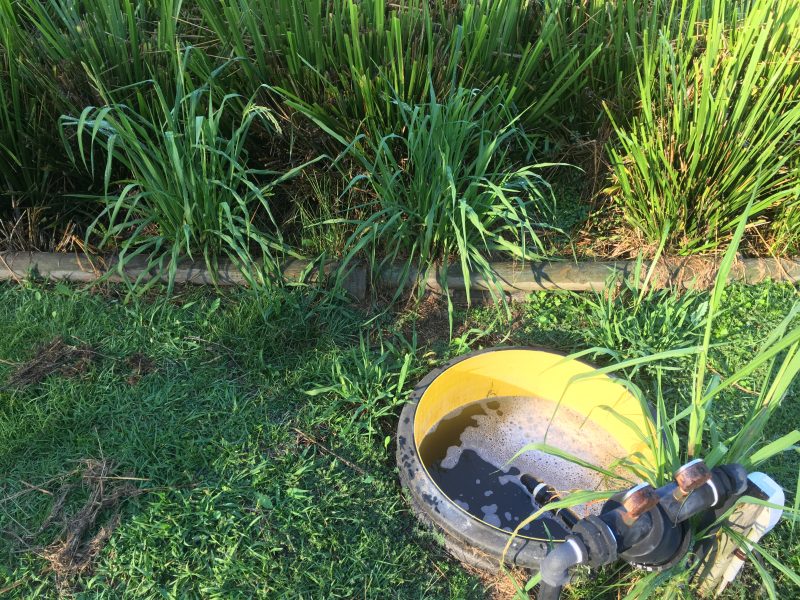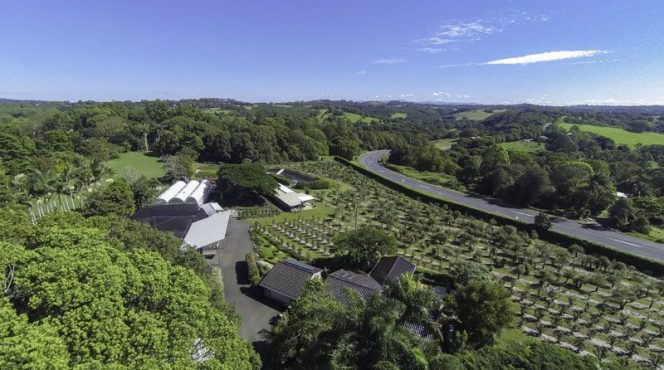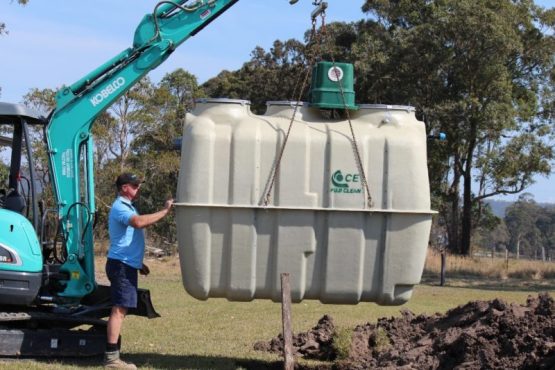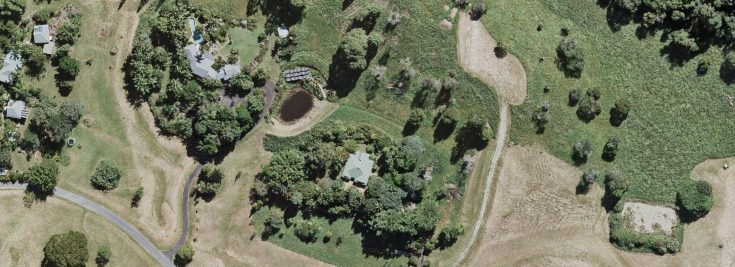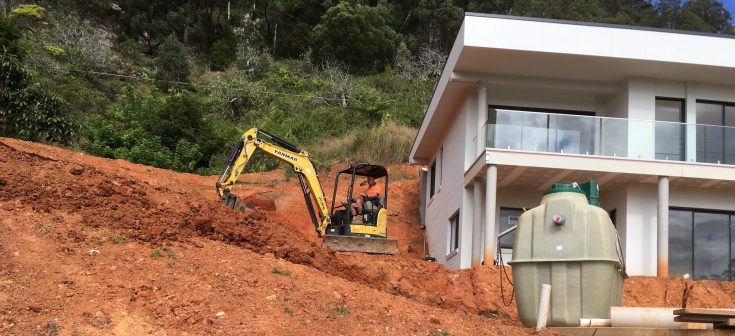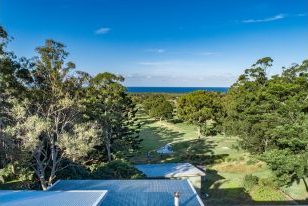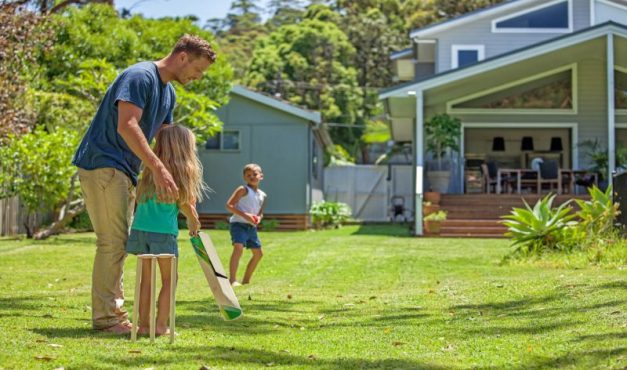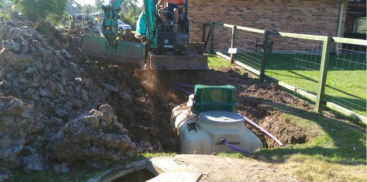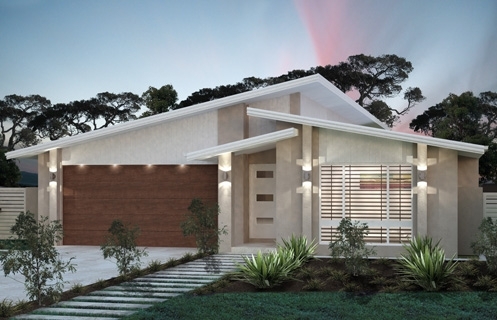PROJECT DETAILS
Location:
Woombah, New South Wales
Product:
Fuji Clean CE1500EX with subsurface irrigation
Capability:
Consult, design, and construct STP
True Water recently completed the replacement of a reed bed sewage treatment system that was failing and causing distress for the homeowners. The system was installed only 10 metres away from the front veranda of the house located on 1.7 acres of flat and clear land. The reed bed system had been in operation for five years and had failed. It was blocked by weeds, and overgrown reeds, and was full of partially treated wastewater. The bed was smelly and providing a moist and protected breeding ground for mosquitoes and insects. Mosquito-born viruses such as Ross River Fever and Barmah Forest are common in Northern New South Wales (NSW). Most people are particularly concerned about keeping their properties insect and mosquito-free.
Home sewage treatment systems should not be something you have to deal with or think about. They should just be hidden in the garden, quietly treating wastewater generated by the home. It can be tricky for homeowners to understand the options available and to ensure they get the right system. The property owners simply wanted to have a treatment system that worked and didn’t require them to get their hands dirty. Rather than replacing the secondary treatment area with another reed bed, the owners engaged True Water to look for another option. They asked for a “set and forget” system that would deliver a high level of treatment and get rid of the odour and insects.
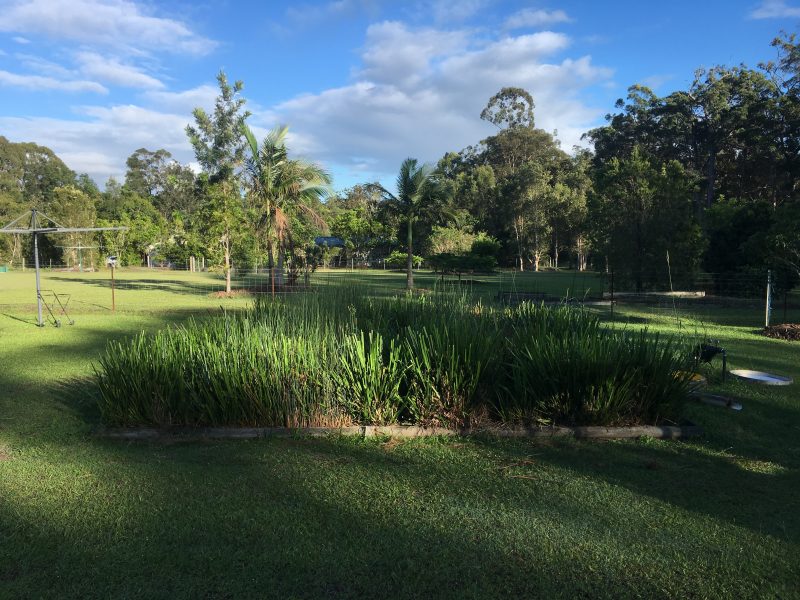
Challenges associated with reed bed systems
The theory of reed bed sewage treatment is simple, though in practice the treatment is often far from satisfactory. This is usually due to incorrect construction, inadequate sizing, regular flooding from blockages, and infrequent maintenance of the system. However, all reed beds will ultimately clog up and fail.
A reed bed is a manufactured wetland that provides some secondary treatment of sewage water. Before it can enter the reed bed, household wastewater is first collected in a primary treatment tank or septic tank. This is where some solids separate out of the sewage. The waste stream then passes through an effluent filter to remove coarse solids. This step is important as reed beds can only treat liquid waste.
Getting the exact conditions for a reed bed sewage treatment system to work successfully is difficult. Reed bed systems are not low maintenance and require a regular maintenance program to keep them working properly. Weeds grow among the reeds, reducing efficiency and requiring removal on a regular basis. The reeds also need regular pruning, uprooting and thinning out. This is important to allow for sufficient plant growth and cleaning of the wastewater.
Reed beds are not a long-term solution. Even if designed, installed and maintained properly, they are only viable for a maximum of seven to 10 years. Solids, oils, grease, and soaps that make it through the septic tank get caught in the gravel of the reed bed, blocking up the system. It’s just a matter of time before a reed bed needs refurbishment. Refurbishing or cleaning a reed bed includes the removal and replacement of not only the reeds but the entire gravel bed and pipe work.
Replacing the failing reed bed with a secondary treatment system
This reed bed was installed as part of the home’s treatment system, along with a septic tank and land application area (LAA) which is also referred to as an effluent dispersal area (EDA). The septic tank was located at the rear of the house and collected the home’s wastewater. The sewage from the septic tank then flowed to the reed bed system at the front of the house for treatment. The treated water was then captured in a pump well and pumped back to the other side of the house to be dispersed via subsurface drip irrigation.
The reed bed was five by four metres. With the septic tank and pump well included, the total area of the reed bed was 25 square metres. Although it was huge, the water quality from the reed bed was very poor. After the initial assessment and consultation with True Water, the client decided to remove the reed bed and septic tank. The subsurface irrigation area was in good condition but needed to be flushed out. This process removes contaminants and bio-film build-up.
It was agreed that a new Fuji Clean CE1500EX aerated wastewater treatment plant would adequately service the needs of the home. Our team worked with the client to choose the best location for the new tank. It was requested that the system be as unobtrusive as possible. The design placed the fibreglass module below ground within the existing gardens. True Water’s consultancy team then prepared and submitted a wastewater application to the council who swiftly approved works to begin.
Overgrown and matted roots reduced the efficiency of treatment.
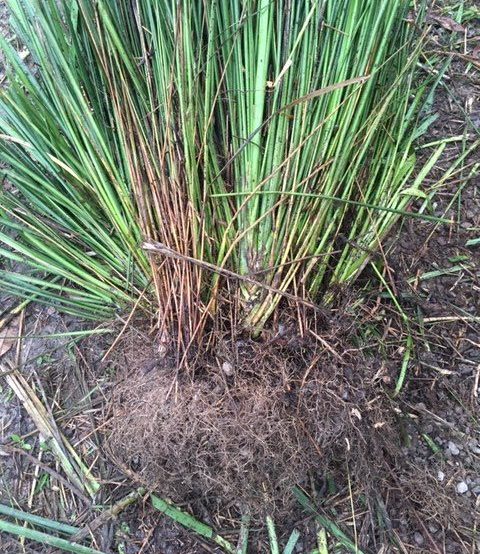
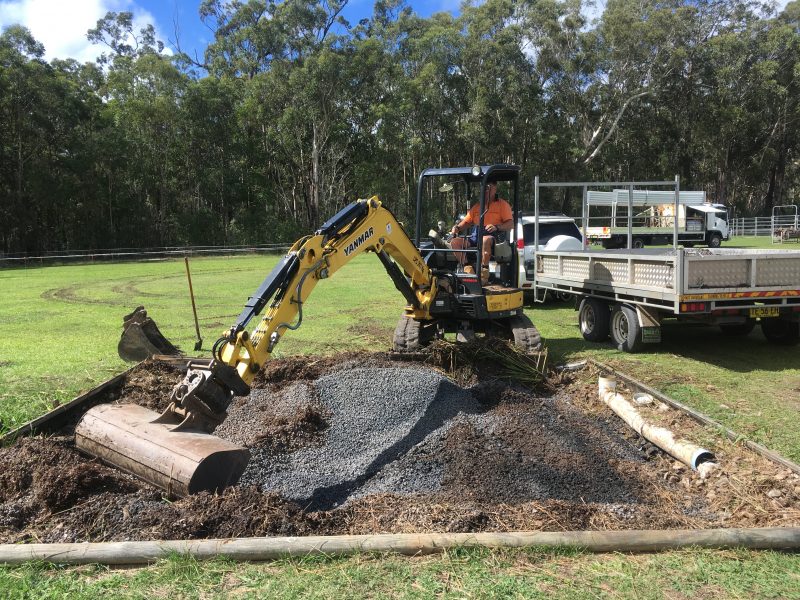
Giving the homeowners their front lawn back
The replacement of the failing reed bed system was completed in one day. Our team carefully excavated a hole for the new system within an existing garden bed located at the rear of the house. The new system was placed close to the old septic to minimise the cost of connecting it to the existing drainage network. The old septic tank was then pumped out and disconnected from the home’s wastewater supply. It was decommissioned, collapsed and filled in with soil leftover from the new system excavation.
The compact Fuji Clean system replaced the 25-square-metre reed bed. To keep the tank hidden in the garden, we chose the Fuji Clean system with a total surface area of only two square metres. The new system, although smaller, has greatly enhanced the quality of water and eliminated any unpleasant smells. The reed bed components were removed in layers and all contaminated materials were removed from the site and correctly disposed of. Imported soil was then used to level off the reed bed area for a nice finish. This allowed the owners to reclaim the space in front of their home and return it back to the lawned area.
The original below-ground disposal area for the treated water could be retained as it was only 10 years old. The irrigation area needed flushing and cleaning because the reed beds hadn’t provided effective treatment for a long period of time. Flushing removed the build-up within the irrigation pipes and removed blockages. Due to the high level of treatment from the Fuji Clean, the existing disposal area will operate well for years to come.
The compact and “no fuss” solution
The replacement Fuji Clean secondary treatment system is completely different to the septic tank and reed bed combination. The first stage of the process in the Fuji Clean begins with anaerobic digestion in the first chamber, the same as a septic tank. From there, the more technical aspects of the Fuji Clean system come into play. The wastewater passes through filtration media in the second chamber, a simple but highly refined process. The filtration media provides the ideal environment for microbial breakdown of the wastewater and is the result of years of research and development.
The wastewater then goes through an aerobic digestion process followed by a clarification process and disinfection in the final chamber. The results in the wastewater being treated to a tertiary level before being dispersed to the LAA. The controlled environment within the module provides a continuous and consistent level of treatment. The Fuji Clean is a sealed system that prevents the escape of odours and mosquitoes from thriving. The tried and tested treatment process delivers reliable treatment with a strong manufacturer’s warranty. The modular tank houses all components and requires no homeowner intervention.
Investing in a True Water site-specific wastewater solution has meant that the homeowners have improved the value and liveability of their home. The Fuji Clean tank remains hidden below ground which has eradicated the mosquitos, eliminated unpleasant odours, and reinstated the garden and lawn areas. The new system is serviced quarterly by our certified maintenance provider. This improves its performance and reduces overall lifetime costs.
